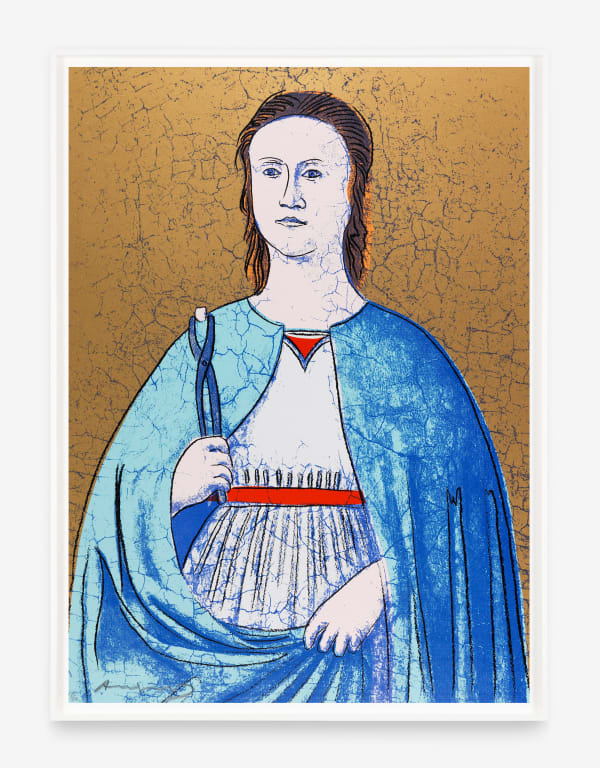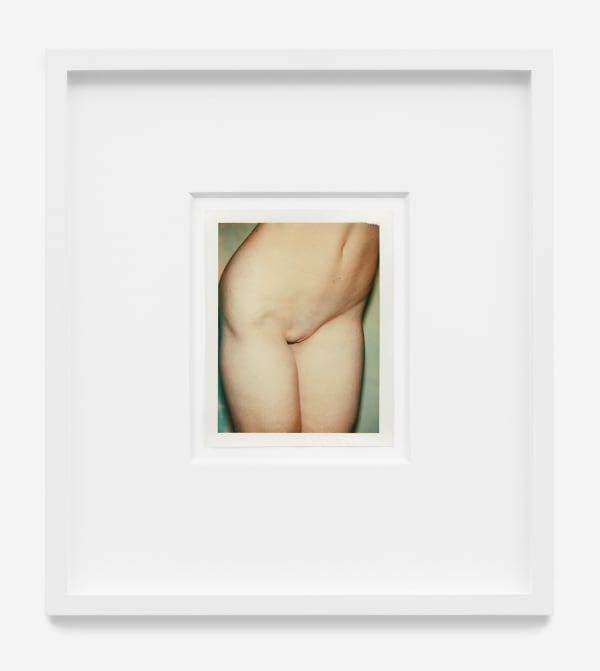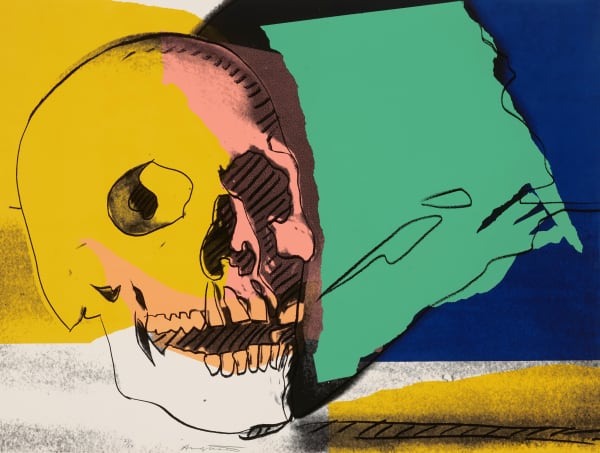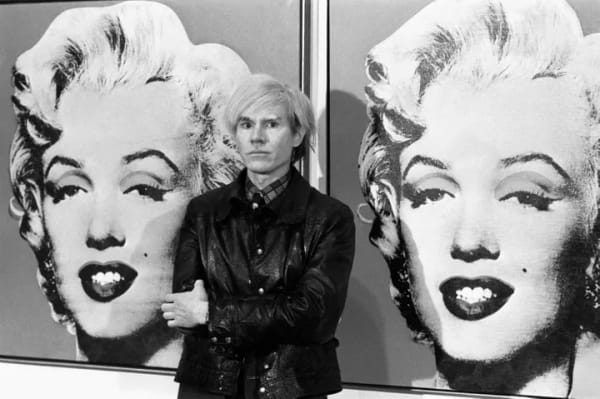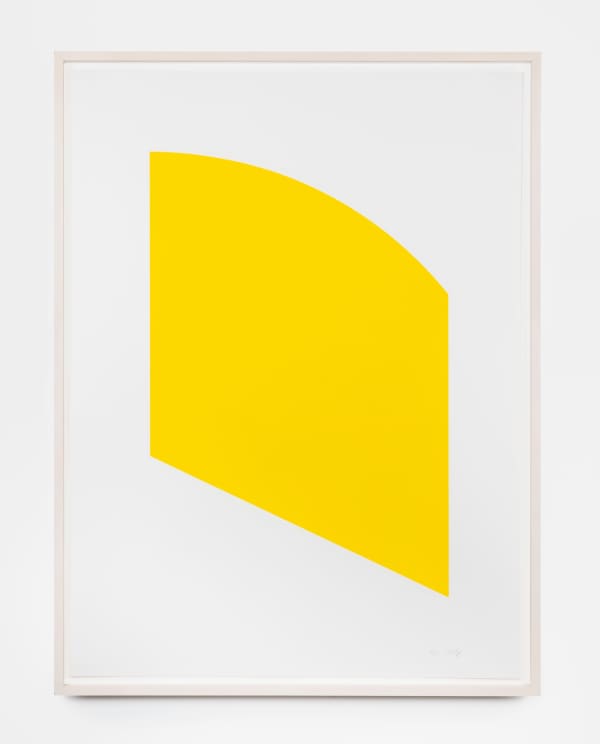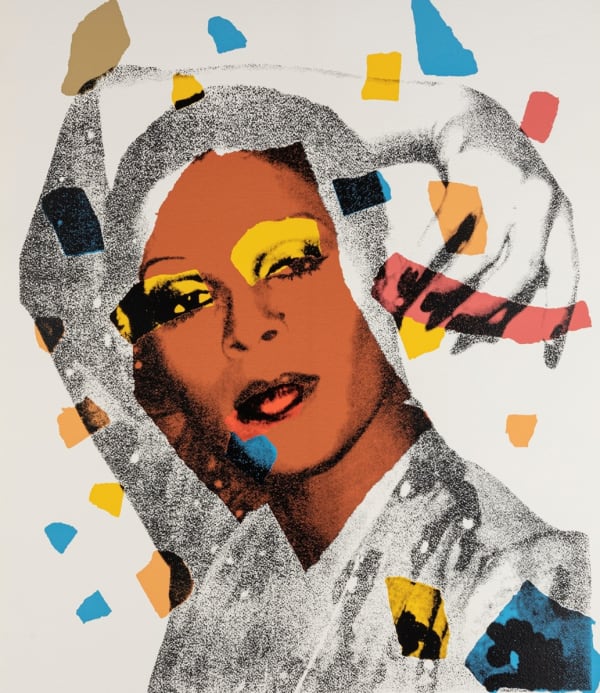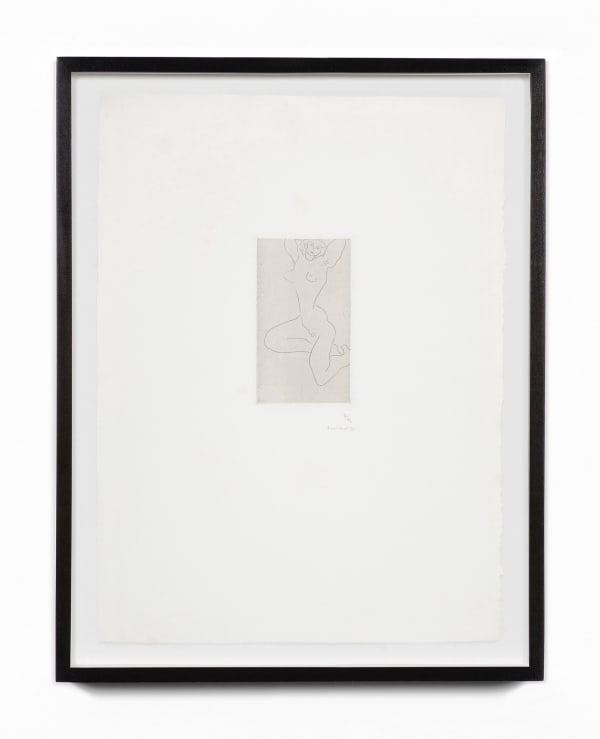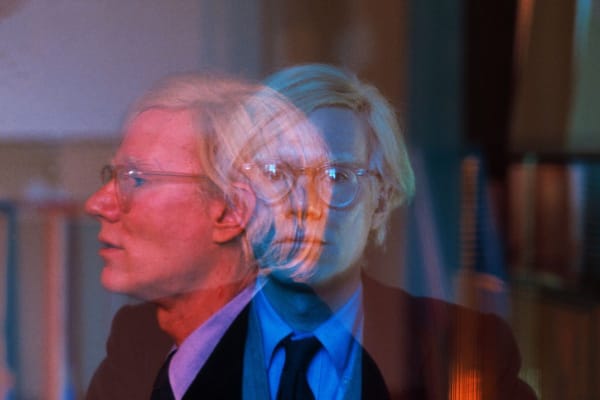“The idea is not to live forever, it is to create something that will.”
Andy Warhol (Pittsburgh, Pennsylvania, 1928 – Manhattan, New York, 1987) is known for his position as a leading figure of Pop Art and a celebrity in his own right. The son of Slovakian immigrants, he graduated from the Carnegie Institute of Technology in 1949 and moved to New York, initially working as a commercial illustrator. Warhol began painting in the late 1950s and rose to prominence upon his exhibitions of paintings of Campbell’s soup cans and Coca-Cola bottles in a deliberately flat, impersonal manner. In 1963, he intensified this objective style further through the use of silkscreen printing, effectively removing the trace of the artist’s hand. He continued to depict consumer items as well as celebrities such as Marilyn Monroe and Jackie Kennedy in a repetitive, serial manner. Warhol also depicted darker aspects of American culture such as car crashes and race riots. His studio, known as The Factory, became a centerpiece of New York bohemian life, attracting actors, models, and other artists. With the help of assistants, he created imitations of Brillo and Heinz boxes at this time. In the late 1960s, he shifted his focus to filmmaking and photography. Warhol’s films were characterized by the lack of a plot, eroticism, and excessive length. Warhol began to cultivate his own cult of celebrity at this time. In 1968, Valerie Solanas shot him, and he barely recovered; this event had a lasting impact on his art. In the 1970s, Warhol shifted his focus to commissions for portraits, while in the 1980s, he collaborated with artists such as Jean-Michel Basquiat and Keith Haring. In 1987, the artist died because of complications from a routine gall bladder surgery. His will stated that his estate be used for “the advancement of the visual arts,” and the Andy Warhol Foundation was established in 1987.
-

From Paris to New York
Transformations in Printmaking 30 Jul - 24 Sep 2021This online viewing room begins with the growth of printmaking in early 20th century Paris, covers the war and interwar years in Europe, and goes up to and beyond the...Read more -

Andy Warhol
The Last Decade 9 Jun - 15 Jul 2020Zeit Contemporary Art is pleased to present an online viewing room devoted to an often overlooked yet crucial period in Andy Warhol’s oeuvre. The late 1970s and 1980s proved to...Read more
-
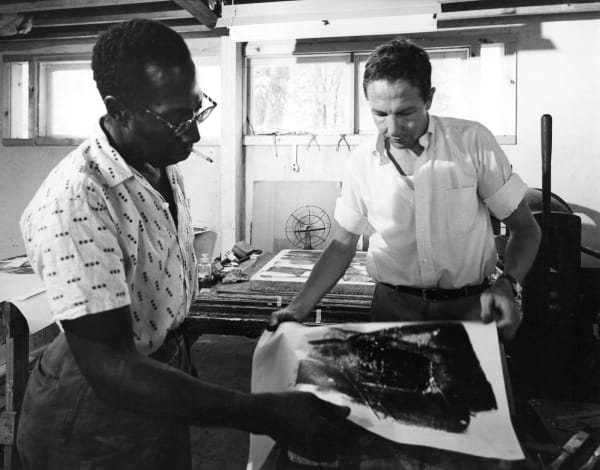
In Conversation with Larissa Goldston
Universal Limited Art Editions (ULAE) September 22, 2021Universal Limited Art Editions (ULAE) played a pioneering role of the greatest significance in the development of printmaking in the United States. Originally founded by...Read more -

Jessica Beck and Mark Loiacono on Andy Warhol
Perspectives June 16, 2020Perspectives: Jessica Beck and Mark Loiacono on Andy WarholRead more
-

Salon Art + Design Announces Its 13th Edition
Art & Object, July 19, 2024 -

A Voyage Through Drawing at Salon du Dessin in Paris
Anna Mikaela Ekstrand, Cultbytes, March 23, 2024 -

New York’s Salon Art and Design Returns, Promising Visitors a ‘Sense of Discovery’
Artnet News, November 2, 2023 -

Liebe Zur Linie. Salon du Dessin & Drawing Now Art Fair
Christiane Meixner, Weltkunst, March 14, 2023 -

Zeit Contemporary Art presents works by Andy Warhol & Keith Haring at Hamptons Fine Art Fair
Artdaily, July 15, 2022 -

Zeit Contemporary Art stages Andy Warhol and Keith Haring at the Hamptons Fine Art Fair
Artfixdaily, July 14, 2022 -

Des Monet, des Warhol, des Rothko et la plus importante collection d’art d’un couple richissime divorcé vont faire flamb
Donnie Ghezlane-Lala, Konbini Arts, May 17, 2022 -

Un retrato de Marilyn de Warhol sale hoy a subasta con expectativas de récord
AFP, El Mundo, May 9, 2022 -

Sur le marché de l'art à New York, une pluie de records en vue
France 24, May 9, 2022 -

Warhol 'Blue' Marilyn Monroe Portrait Up For Auction For Estimated Record $200 Million
Mary Papenfuss, The Huffington Post, May 8, 2022 -

安迪沃荷創作瑪麗蓮夢露肖像 可能創拍賣價格紀錄
Radio Taiwan International, May 7, 2022 -

Zeit Contemporary Art Showcases The History of Modern Prints
Annabel Keenan, Cultbytes, September 18, 2021 -

From Paris to New York: Transformations in Printmaking
Meer, September 4, 2021 -

Transformations in Printmaking Surveyed at Zeit Contemporary Art
Eli Anapur, Widewalls Magazine, August 13, 2021 -

From Paris to New York
Art Plugged, July 30, 2021 -

From Henri Matisse to Carmen Herrera, Transformations in Printmaking at Zeit Contemporary Art
Artfixdaily, July 30, 2021 -

Andy Warhol: spletna razstava
Mladina Magazine, June 14, 2020 -

Newyorška galerija postavila spletno razstavo Andy Warhol: The Last Decade
STA, June 13, 2020 -

Zeit Contemporary Art Takes a Look at Andy Warhol’s Last Decade
Elena Martinique, Widewalls Magazine, June 12, 2020 -

Andy Warhol: The Last Decade
Mark Westall, FAD Magazine, June 9, 2020 -

Zeit Contemporary Art opens ‘Andy Warhol: The Last Decade’
ArtDaily, June 9, 2020 -

Newyorška galerija na ogled postavila spletno razstavo Andyja Warhola
24ur.com, June 6, 2020
-

Andy Warhol
Nudes Linda Nochlin, 1995Hardcover, 84 pagesRead more
Publisher: Robert Miller Gallery / The Overlook Press
ISBN: 0879517948
Dimensions: 11 3/4 x 9 1/2 x 1/2 in -

Andy Warhol
Photographs Stephen Koch, 1987Hardcover, 77 pagesRead more
Publisher: Robert Miller Gallery, New York
ISBN: 0944680232 -
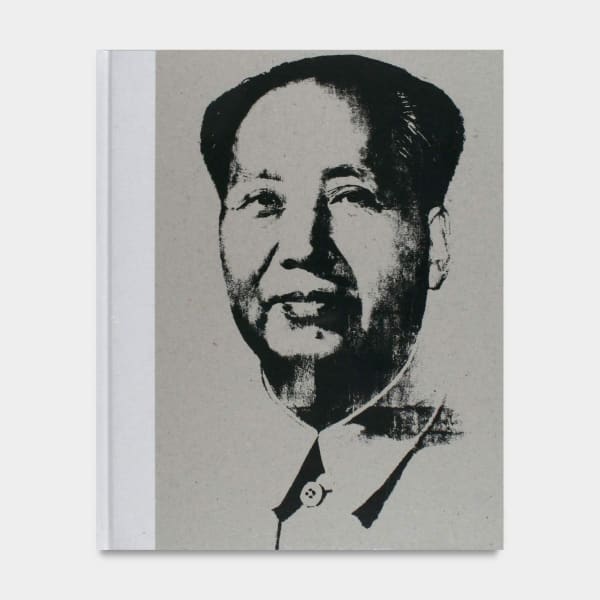
Cast a Cold Eye
The Late Work of Andy Warhol Vincent Fremont, Boris Groys, 2006Hardcover, 296 pagesRead more
Publisher: Gagosian Gallery
ISBN: 1932598375
Dimensions: 9 1/4 x 11 3/8 in -
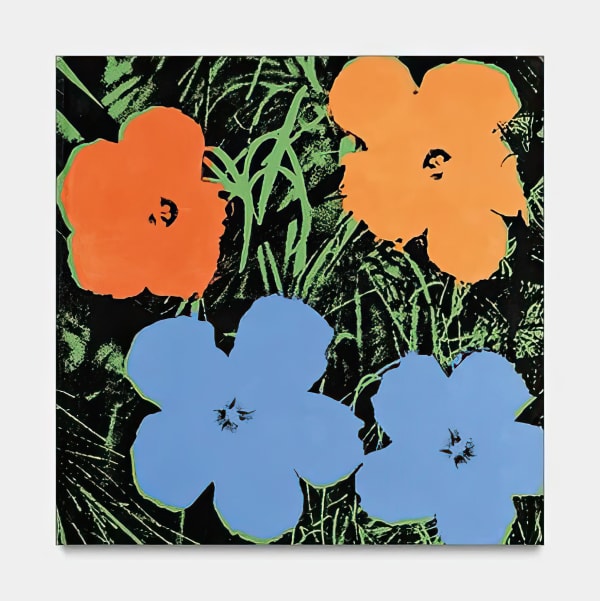
Jeff Koons & Andy Warhol
Flowers Daniel Pinchbeck, 2003Hardcover, 112 pagesRead more
Publisher: Gagosian Gallery
Dimensions: 10 x 0.75 x 10 in



